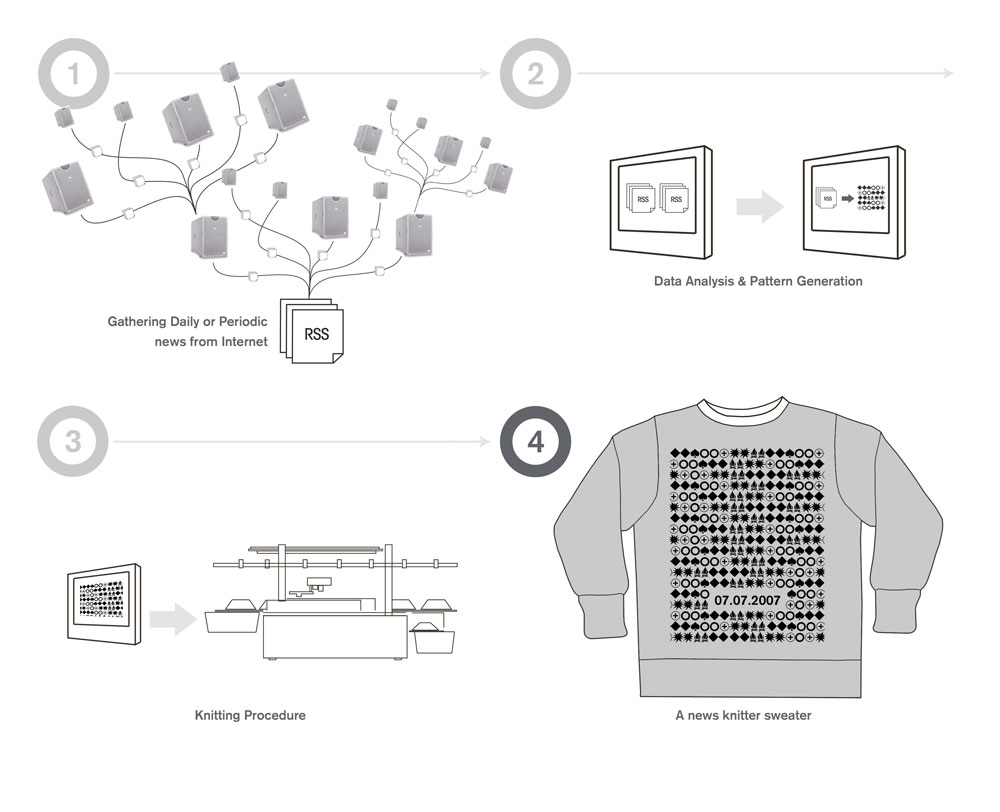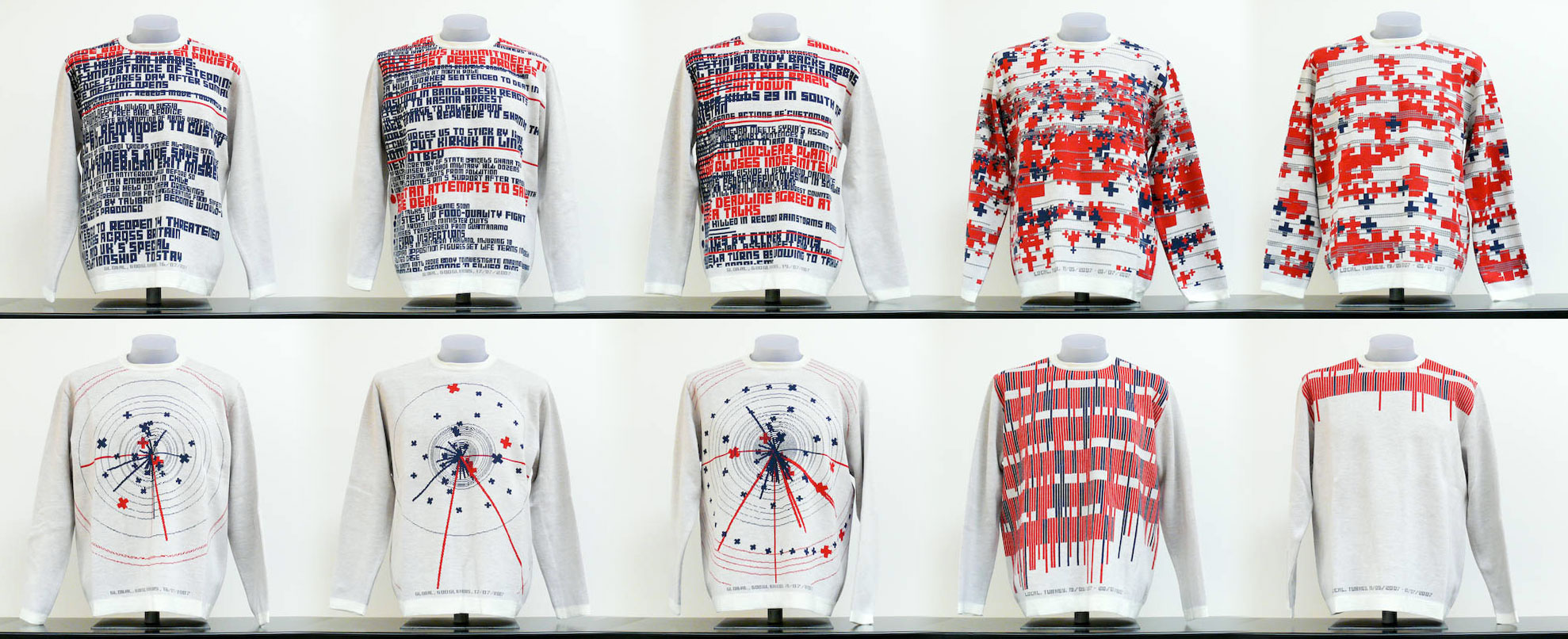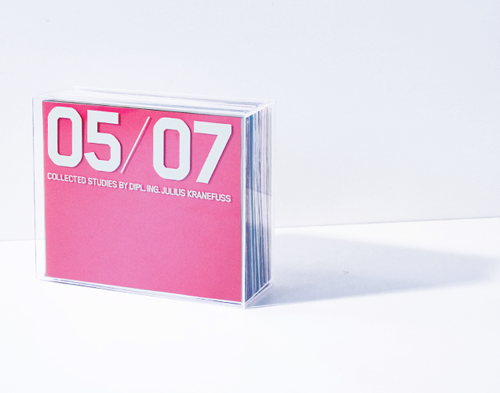- I have developed my screenprinting skills by using this process as much as i can do. I understand what artwork is suitable for screenprinting and what is not. I.e. And what type of screen is suitable for what inks; i.e. glow in the dark screenprinting would worked better with a fabric screen because the mesh would have been large enough fo glow in the dark embossing powder to be pushed through.
-I have also used the digital print resource quite extensively, for printing onto different paper stocks. This has developed my understanding of how different papers work with different printing processes. And what paper to use for what type of effect.
-Through creating a number of publications i have improved my skills with indesign. This has also meant that i am more capable with some of the rules of typography. I have started to understand the use of grids, and espescially the baseline grid, and columns grids.
--My folding skills have greatly improved; I have developed an understanding of folding techniques.
-I have used craft as a method of developing work, and working with printing processes to guide the production and design of a project.
-Using the production as the main focus and rationale behind a project has helped qualm fears of the project being invalid or unsuccesful. This has been backed up by seeing the work of professional designers and noticing that production is so important in the success of a project.
-While looking at alot of designers work i have noticed that there is a particular angle that gives the rationale or direction of the project. whether this be production, message, format, concept.
-I believe that simple algebra is a source for breaking down the design process to a simple framework. I believe that using simple algebra can give you a direction for a project. All designers are deeply connected with the term "form follows function" which can be broken down to simply Function = form. This credo gave designers a framework to work around that developed modernism. I believe that this framework can be modified and reutilised by adding other words relating to the design process. Eg. Construction, concept, content, style,format, message, visual language etc
e.g.
form=content
content=form
construction=function
content=format
concept=style
-The production and craft of my work has greatly improved in this module, by focusing on this through this project it has developed and i am far happier with the outcome.
-In this project i have thought about paperstocks alot more. In the future i will take this into consideration greatly.
-Although the craft of these projects is better than in past projects i still believe that there is alot of improvement that can be made, and possibly how to use this as the core focus of a project.
- I need some client based work in my portolio so i intend to do some. I think this will give me a more applicable portfolio for the industry. I believe it will show that i can do work for clients that have a particular aim or message.
- I will create my work folders using indesign as i go along so that at the end of the project i have a publication for my projects that clearly shows my design process. This will give me practice with layout and with the use of indesign.
Wednesday 17 December 2008
Tuesday 25 November 2008
publication packaging
Packaging of publications
series and singular
MATERIALS PROCESSES PRINT
ONLAB:
Edited by Eric McLuhan and W. Terrence Gordon
Design, packaging and production: Die Gestalten Verlag Berlin, Art direction: Robert Klanten
Layout, typography: onlab Berlin
412 pages, 20 individual offprints, 15 x 23 cm, hard box, 20 individual soft covers, ISBN 1-58423-051-7
Published by: Gingko Press, Inc., 2005
The essay is for exploring; the book, for explaining. Such was McLuhan’s philosophy about these two forms. The essay is the freer
form and one better suited to exploration than the longer meditation, the book. The McLuhan Unbound offprints series is not the last
word in presenting McLuhan´s ideas and discoveries, but the first.









 -Like the way they have differentiated the different publications by having different coloured stocks, for inserted pages.
-Like the way they have differentiated the different publications by having different coloured stocks, for inserted pages.



February 2006
Project Projects worked with twelve graduate students from Bard College’s Center for Curatorial Studies to conceptualize and produce this catalog and exhibition. Forty-seven artists and writers responded to the curators' prompt regarding the relevance of cultural institutions. Visitors to the exhibition, located at Art in General in New York, assembled their own portable exhibition from the provided screenprinted boxes, stacks of cards, and mailing labels.
-I LIKE THE CARBOARD BOX
series and singular
MATERIALS PROCESSES PRINT
ONLAB:
Edited by Eric McLuhan and W. Terrence Gordon
Design, packaging and production: Die Gestalten Verlag Berlin, Art direction: Robert Klanten
Layout, typography: onlab Berlin
412 pages, 20 individual offprints, 15 x 23 cm, hard box, 20 individual soft covers, ISBN 1-58423-051-7
Published by: Gingko Press, Inc., 2005
The essay is for exploring; the book, for explaining. Such was McLuhan’s philosophy about these two forms. The essay is the freer
form and one better suited to exploration than the longer meditation, the book. The McLuhan Unbound offprints series is not the last
word in presenting McLuhan´s ideas and discoveries, but the first.









 -Like the way they have differentiated the different publications by having different coloured stocks, for inserted pages.
-Like the way they have differentiated the different publications by having different coloured stocks, for inserted pages.


February 2006
Project Projects worked with twelve graduate students from Bard College’s Center for Curatorial Studies to conceptualize and produce this catalog and exhibition. Forty-seven artists and writers responded to the curators' prompt regarding the relevance of cultural institutions. Visitors to the exhibition, located at Art in General in New York, assembled their own portable exhibition from the provided screenprinted boxes, stacks of cards, and mailing labels.
-I LIKE THE CARBOARD BOX
type/environment/newsprint research
BOOK:MATERIALS, PROCESS, PRINT
CREATIVE SOLUTIONS FOR GRAPHIC DESIGN
NEWSPRINT
-"traditionally used in web printing"
-"printed from a reel'
-'supply in sheet form limited'
-'Because of its lightness and tendency to absorb ink, newsprint can be difficult to print conventionally'
-'it may not be possible to use a conventional newspaper printer as production runs of newspapers are very high.'it may be better to resort to white or off white thin uncoated paper to replicate the effect'
Example:Albert Folch Studio
:::::::::::::::::::::::::::::::::::::::::::::::::::::::::::::::::::::::::::::::::::::




This publication uses a rough newsprint-type paper for its 56 text pages, with a slightly larger heavy boxboard cover that protects the contents.
folch used rotary printing method commonly employed to print newspapers.



















CREATIVE SOLUTIONS FOR GRAPHIC DESIGN
NEWSPRINT
-"traditionally used in web printing"
-"printed from a reel'
-'supply in sheet form limited'
-'Because of its lightness and tendency to absorb ink, newsprint can be difficult to print conventionally'
-'it may not be possible to use a conventional newspaper printer as production runs of newspapers are very high.'it may be better to resort to white or off white thin uncoated paper to replicate the effect'
Example:Albert Folch Studio
:::::::::::::::::::::::::::::::::::::::::::::::::::::::::::::::::::::::::::::::::::::




This publication uses a rough newsprint-type paper for its 56 text pages, with a slightly larger heavy boxboard cover that protects the contents.
folch used rotary printing method commonly employed to print newspapers.



















NEW RATIONALE-FOCUS
PRODUCTIONPRODUCTIONPRODUCTIONPRODUCTIONPRODUCTIONPRODUCTION
PRODUCTIONPRODUCTIONPRODUCTIONPRODUCTIONPRODUCTIONPRODUCTION
PRODUCTIONPRODUCTIONPRODUCTIONPRODUCTIONPRODUCTIONPRODUCTION
Consider Production
Consider Paper Stocks; recycled paper;
Consider Print Processes; foiling, gloss, matt,
Consider look and feel of the object
Tactile quality
Materials;card, plastic, wood, rubber, acylic, book cloth, coloured paper, bible paper, cork, felt, grey board, metal, leather, newsprint
PRODUCTIONPRODUCTIONPRODUCTIONPRODUCTIONPRODUCTIONPRODUCTION
PRODUCTIONPRODUCTIONPRODUCTIONPRODUCTIONPRODUCTIONPRODUCTION
Consider Production
Consider Paper Stocks; recycled paper;
Consider Print Processes; foiling, gloss, matt,
Consider look and feel of the object
Tactile quality
Materials;card, plastic, wood, rubber, acylic, book cloth, coloured paper, bible paper, cork, felt, grey board, metal, leather, newsprint
Sunday 23 November 2008
DATA VISUALIZATION/PROCESSING/
Processing programming software
"Processing is an open source programming language and environment for people who want to program images, animation, and interactions. It is used by students, artists, designers, researchers, and hobbyists for learning, prototyping, and production. It is created to teach fundamentals of computer programming within a visual context and to serve as a software sketchbook and professional production tool. Processing is an alternative to proprietary software tools in the same domain."
Processing is a complex data visualization device that converts code to visuals. This can become incredibly complex as seen in some of the work below. Interactivity can also be used with the visuals reacting to movement etc.
Mæve installation @ Venice Biennale 2008 from Maeve installation on Vimeo.

Roots Multi Touch Tangible Installation Teaser from BricK Table on Vimeo.
Roots demo 2 from Memo Akten on Vimeo.
////////////////////////////////////////////////////////////////////////////////////////////////////////////////////////
////////////////////////////////////////////////////////////////////////////////////////////////////////////////////////

NEWS KNITTER
What is News Knitter?
News Knitter is a data visualization project which focuses on knitted garments as an alternative medium to visualize large scale data.
The production of knitted garments is a highly complex process which involves computer support at various steps starting with the designs of both the fabric and the shape of garments until they are ready-to-wear. In recent years, technical innovations in machine knitting have especially focused on the patterning facilities. The patterns are designed by individuals generally depending on the current trends of fashion and the intended target markets and multiplied through mass production. News Knitter translates this individual design process into a world-wide collaboration by utilizing live data streams as a base for pattern generation. Due to the dynamic nature of live data streams, the system generates patterns with unpredictable visuality.
News Knitter converts information gathered from the daily political news into clothing. Live news feed from the Internet that is broadcasted within 24 hours or a particular period is analyzed, filtered and converted into a unique visual pattern for a knitted sweater. The system consists of two different types of software: whereas one receives the content from live feeds the other converts it into visual patterns, and a fully computerized flat knitting machine produces the final output. Each product, sweater of News Knitter is an evidence/result of a specific day or period.
The exhibition consists of ten unique sweaters that are produced as sample outputs of the News Knitter project. The patterns of the sweaters are generated by using online global news of a particular day or local Turkish news of a particular time period.


"Processing is an open source programming language and environment for people who want to program images, animation, and interactions. It is used by students, artists, designers, researchers, and hobbyists for learning, prototyping, and production. It is created to teach fundamentals of computer programming within a visual context and to serve as a software sketchbook and professional production tool. Processing is an alternative to proprietary software tools in the same domain."
Processing is a complex data visualization device that converts code to visuals. This can become incredibly complex as seen in some of the work below. Interactivity can also be used with the visuals reacting to movement etc.
Mæve installation @ Venice Biennale 2008 from Maeve installation on Vimeo.

Roots Multi Touch Tangible Installation Teaser from BricK Table on Vimeo.
Roots demo 2 from Memo Akten on Vimeo.
////////////////////////////////////////////////////////////////////////////////////////////////////////////////////////
////////////////////////////////////////////////////////////////////////////////////////////////////////////////////////

NEWS KNITTER
What is News Knitter?
News Knitter is a data visualization project which focuses on knitted garments as an alternative medium to visualize large scale data.
The production of knitted garments is a highly complex process which involves computer support at various steps starting with the designs of both the fabric and the shape of garments until they are ready-to-wear. In recent years, technical innovations in machine knitting have especially focused on the patterning facilities. The patterns are designed by individuals generally depending on the current trends of fashion and the intended target markets and multiplied through mass production. News Knitter translates this individual design process into a world-wide collaboration by utilizing live data streams as a base for pattern generation. Due to the dynamic nature of live data streams, the system generates patterns with unpredictable visuality.
News Knitter converts information gathered from the daily political news into clothing. Live news feed from the Internet that is broadcasted within 24 hours or a particular period is analyzed, filtered and converted into a unique visual pattern for a knitted sweater. The system consists of two different types of software: whereas one receives the content from live feeds the other converts it into visual patterns, and a fully computerized flat knitting machine produces the final output. Each product, sweater of News Knitter is an evidence/result of a specific day or period.
The exhibition consists of ten unique sweaters that are produced as sample outputs of the News Knitter project. The patterns of the sweaters are generated by using online global news of a particular day or local Turkish news of a particular time period.


BRIEF:COLLECTIONS//:publications/series of publications
 :-The packaging of the series of books is good. Gives the finished deliverable a real tactile quality. Adds value; to Be fair it looks shit hot.
:-The packaging of the series of books is good. Gives the finished deliverable a real tactile quality. Adds value; to Be fair it looks shit hot. Production Quality is brilliant, has a finished quality to it. That alot of my work lacks, and my portfolio lacks. I need to put more time into the finish of production, I need to think about stocks and printing processes, and how these can effect the quality of the design.
Production Quality is brilliant, has a finished quality to it. That alot of my work lacks, and my portfolio lacks. I need to put more time into the finish of production, I need to think about stocks and printing processes, and how these can effect the quality of the design.
 This piece is a fine example of good production, and how the production can be the focus of the design. This piece has used japanese book binding technique which fits perfectly with the content of the piece.
This piece is a fine example of good production, and how the production can be the focus of the design. This piece has used japanese book binding technique which fits perfectly with the content of the piece. <<<<<<<<<<<<<<<<<<<<<<<<<<<<<<<<<<<<<<<<<<<<<<<<<<<<<<<<<<<<<<<<<<<<<<<<<<<<<<<<<<<<<>>>>>>>>>>>>>>>>>>>>>>>>>>>>>>>>>>>>>>>>>>>>>>>>>>>>>>>>>>>>>>>>>>>>>>>>>>>>>>>>>>>>>>
<<<<<<<<<<<<<<<<<<<<<<<<<<<<<<<<<<<<<<<<<<<<<<<<<<<<<<<<<<<<<<<<<<<<<<<<<<<<<<<<<<<<<>>>>>>>>>>>>>>>>>>>>>>>>>>>>>>>>>>>>>>>>>>>>>>>>>>>>>>>>>>>>>>>>>>>>>>>>>>>>>>>>>>>>>>http://faund.net
::::::::::::::::::::::::::::::::::::::::::::::::::::::::::::::::::::::::::::::::::::::::::::::::::::::::::::::::::::::::::::::::::::::
Through a selection of finders presented in a paper magazine and online-platform, FAUND aims to highlight the value of internet-found images. We find people who create finding.
:::::::::::::::::::::::::::::::::::::::::::::::::::::::::::::::::::::::::::::::::::::::::::::::::::::::::::::::::::::::::::::::::::::
 What interests me about this piece is the sourcing of the content, content comes almost randomly from the internet, from a number of finders, who search out images from throughout the internet. In this way the content is outside of the designers control yet also within it, by the selection of finders.
What interests me about this piece is the sourcing of the content, content comes almost randomly from the internet, from a number of finders, who search out images from throughout the internet. In this way the content is outside of the designers control yet also within it, by the selection of finders.




SOURCE=CONTENT
INTERNET=IMAGES
//////////////////////////////////////////////////////////////////////////////////////
Subscribe to:
Posts (Atom)